18 Best Ways to Improve Customer Experience (CX) for 2025
- August 12, 2020
- 22 mins read
- Listen

Customer frustration can be a silent killer for any business. Whether it’s long waiting times, lack of personalization in customer service, or miscommunication, these pain points can take customers straight to your competitors. Businesses are often left wondering why loyalty is decreasing, even when they believe they are doing everything right.
As per Forbes, “Customer experience is today’s business benchmark.” Hence increasing client experience should be the prime focus to make your brand stand out. One of the first things that you can do to have a solid customer experience strategy is to enhance client experience across all the touchpoints. Consumers expect a positive experience, not just a transactional relationship, with the brands. As a business, you should deliver a delightful customer experience to make your business stand out from its competitors.
To guide you, in this blog we will dig deeper to explore the benefits of improving customer experience and share 18 practical tips to build a robust customer experience strategy that ensures you deliver the best to your customers.
What is Customer Experience?
In simple terms, Customer experience (CX) is a broad concept that includes everything a business does for its customers to connect, support, engage with, and create positive interactions during their decision-making, purchasing, and post-purchase journeys.
CX is not only about meeting customer expectations; it’s also about exceeding them. When a brand walks the extra miles to create a positive customer experience, it helps to build trust, loyalty, and encourages the customers to come back for repeat businesses. On the other hand, a negative experience can frustrate and drive customers away.
To sum up this for you, CX is the foundation of how customers feel about your brand and how likely they are to recommend it to their near and dear ones.
Benefits of Improving Customer Experience
Offering positive customer experience is very important for your business success because satisfied customers not only become the loyal ones but also chances are high that they will recommend your brand to others as well. On the other hand, negative customer experience can harm your brand image. So, it may seem like extra effort to focus solely on customer experience, but it is worth it. Here’s a list of benefits that positive CX offers to the companies.
1. Increased Customer Loyalty
When you give positive experiences to your customers, they feel valued and are more likely to stay loyal. Staying loyal means more repeat business and long-term relationships, both of which are very important for sustainable growth in your business. A seamless customer experience can also make your brand stand out among the rest, as customers always love companies that prioritize customer requirements over making their own profits.
2. Increased Sales Conversions
Excellent customer experience directly impacts company growth and sales conversions. Your happy and satisfied customers will definitely come back for repeat business, try out new products or services, and spend more. Additionally, they will also become brand advocates, sharing their positive experiences with friends, family, and colleagues. Word-of-mouth referrals and glowing online reviews can significantly boost your revenue without additional marketing costs.
3. Lower Customer Churn
Poor customer experience is one of the main reasons for customer churn. When they experience something bad with your company, they are more likely to replace you with other brands. By addressing customer pain points and exceeding their expectations, you can reduce the likelihood of customers leaving you. Proactive communication, effective problem resolution, and personalized interactions show customers that they are important for you, increasing retention rates.
4. Improved Employee Satisfaction
A focus on customer experience often leads to a more supportive and engaging work environment for employees. When teams are equipped with the tools and training to deliver excellent customer service, they feel more confident and motivated in their roles. Satisfied employees, in turn, are more likely to deliver their best at work.
5. Higher Competitive Advantage
In the same industry where various companies are selling products or services from similar segments, quality customer experience can be a major differentiator. Businesses that prioritize CX are better positioned in the market to attract and retain customers compared to other competitors who overlook CX improvement. When you offer a memorable experience that not only builds loyalty but also sets your brand apart from others, ensuring customers choose you over other alternatives again and again.
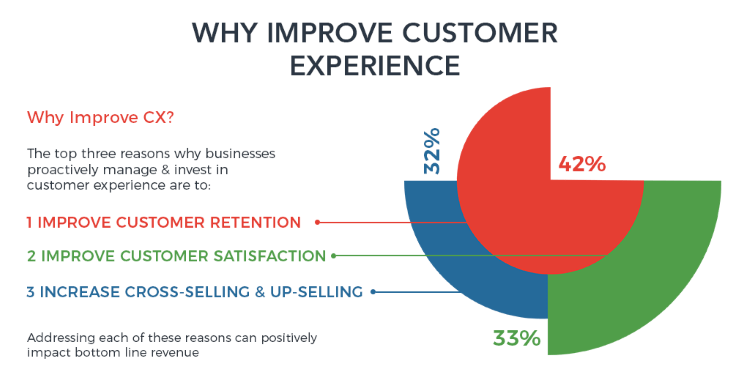
18 Best Ways to Improve Customer Experience (CX)
The customer experience (CX) journey starts from the point they interact with your business, whether it is through the website, referral, or an advertisement. As a business, it is essential to take every possible measure for a delightful customer service experience. If you’re looking to create meaningful connections with your customers, here are 18 proven strategies to improve your customer experience and take it to the next level.
1. Understand Customer Pain Points
So, how to improve customer experience? The first step is gaining a deep understanding of your target audience and their pain points. When you create detailed customer personas, you can uncover detailed insights such as their behavior, preferences, and needs and struggles. With this information, you can customize your product offerings to deliver more personalized and impactful experiences.
Customer satisfaction surveys, Net Promoter Scores (NPS), and Customer Effort Scores (CES) are some of the smart techniques that allow businesses to pinpoint customer pain points. Here you will get actionable insights—both positive and negative—that can help to improve the overall customer journey.
2. Offer Personalized CX
Personalization is no longer a luxury—it’s an expectation. Today’s customers want businesses to understand their pain points and preferences and offer tailored experiences that resonate with them. Crafting content, products, and services tailored to a customer’s specific interests and also personalizing the interactions can enhance engagement and potentially boost conversion rates.
There are various approaches to personalizing the customer experience such as:
- Invest in Customer Relationship Management (CRM) systems and customer communication platforms to store and analyze this data. With these insights, you can craft highly targeted marketing campaigns and product recommendations.
- Group your customers based on common characteristics such as age, location, or buying behavior. Segmentation helps you deliver relevant offers and content to specific groups.
- Make your messages feel personal and relevant by addressing customers by their names.
- Utilize location data to personalize offers and experiences. For example, retail stores can send location-based push notifications when customers are near their shops.
- In live chat support, the support team can offer personalized assistance by taking reference from customer details and past chat history.
3. Build an Omni Channel Strategy for Better Customer Experience
Building an omnichannel strategy is very important to help businesses provide crucial insights into customer interactions and their behavior across their life cycle. The strategy includes multiple channels for sales, customer support, and marketing. 9 out of 10 consumers expect an omnichannel experience with seamless service between communication methods.
Customers expect that every interaction with your business should be a similar experience. It means it should not be siloed. Having a seamless journey across all channels, both online and offline is the key to provide a consistent omnichannel customer experience.
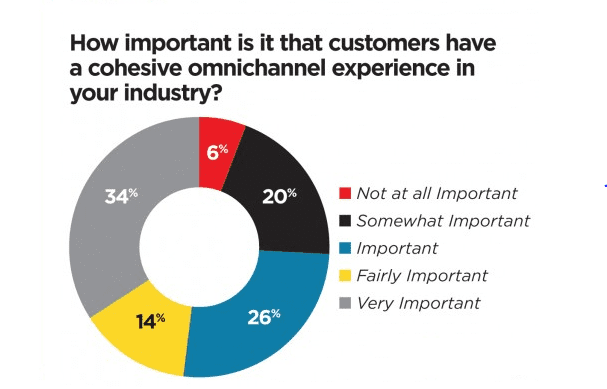
Omnichannel CX strategy focuses on delivering a cohesive customer service experience irrespective of the channel used by customers to reach out to your business.
Here is how an omnichannel communication strategy helps to improve the customer journey.
- The strategy empowers customers to connect with the brand through their preferred channels by making a smooth transition in the same interaction.
- It helps to understand your customer journey better and collect insights and take action to improve various aspects of your business. It streamlines customer interactions under one platform for better team productivity to improve customer experience.
4. Deliver Superior Customer Service with Live Chat
Customer service should be customer focused – not company focused. In order to enhance the client experience, you need to evaluate every moment your customer interacts with your company. Customer-centric companies are 60% more profitable than companies that don’t focus on customers.
Good customer service levels up customer satisfaction. Happy customers create positive word of mouth about you. One of the best ways to adopt an excellent customer engagement strategy is to provide real time support. By using digital customer engagement tools, you can make conversation interactive and increase client experience.
Here is how to improve customer experience by using live chat tools:
- You can instantly engage with customers with live chat and respond to their queries. Connecting with customers right away reduces the number of issues and improves the resolution time.
- For any complex issues, you can collaborate with customers in real time with co-browsing and reduce the number of touchpoints, thus improving first contact resolution (FRT).
- You can personalize conversations by using video chat solutions. It helps to identify complex technical issues faster and provides effective solutions.
There many live chat platforms available in the market and REVE Chat is one of the best. It is an automated and omnichannel live chat platform that helps businesses to deliver real time assistance to their customers on websites, mobile apps and other social media platforms like Facebook, Viber, Instagram, Telegram and WhatsApp. SIGN UP to start a free trial and explore how you can deliver excellent service that will improve customer relationships and customer experience.
5. Train Your Customer Facing Teams
Your customer-facing teams are the first people customers will interact with. They act as a lasting first impression of your brand or business. As a business, you should have a defined standard for your customer interaction levels, and processes in place that can help your teams to maintain the level. But what exactly should it include?
Conducting regular training programs can help your sales, support, and marketing team to deliver flawless assistance. 88% of high-performing businesses are making significant investments in agent training compared to only 57% of underperformers. Great customer service experience hinges on the key points:
Product Knowledge
Your teams should have an understanding of your business and products as it is at the core of while dealing with customers. Conducting intensive product training helps in imparting authentic information related to your products & services. More importantly, giving product knowledge is one of the best ways of motivating customer service employees.
It can help businesses in the following ways:
- It helps to understand your customer needs faster and the solutions to offer.
- It builds confidence in dealing with customers by promptly responding to their queries.
- With strong product knowledge, you can deal with customer complaints effectively.
Soft Skills
Fostering effective communication skills should be an integral part of the company’s values. Training the team with customer service etiquette. like patience, empathy helps to promote your brand to future customers and build a strong relationship. It can help your business in the following ways:
- It helps to learn the customer problem better and enables you to deliver faster support.
- The number of touchpoints is significantly reduced.
- When you assist customers in real-time, it helps in reducing the sales cycle and increasing sales conversions.
- You can personalize conversations, which can build trust and customer loyalty.
6. Leverage the power of Artificial Intelligence (AI)
Artificial Intelligence (AI) has taken over largely in order to deliver an improved customer experience. Deploying chatbots can help businesses to enhance their customer service experience strategy and achieve faster growth.
Chatbots can save up to 30% in customer support costs and can help businesses by speeding up response time and answering up to 80% FAQs”. Bots are the best way to meet customer requests in real-time. It reduces the customer frustration of being in long queues to get answers.
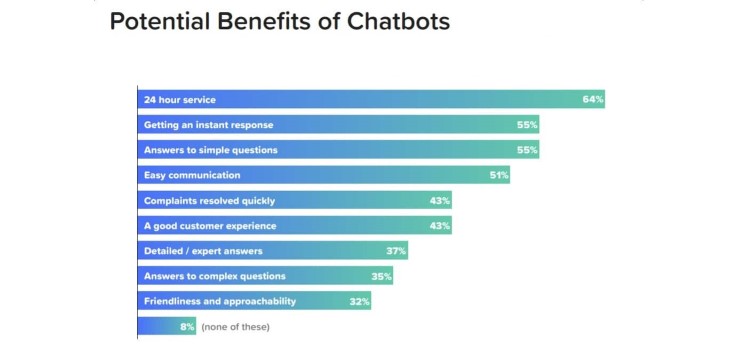
REVE Chat’s AI powered multilingual chatbot automates many of your business operations including customer service even after your business hours or all of your support agents are busy with other important tasks. Many businesses have opted for REVE Chat to enhance their operations, and Veritas Finance Limited is one of them.
Dedicated to supporting micro, small, and medium enterprises (MSMEs) in India, Veritas focuses on providing financial assistance to the people of rural areas but faces a significant challenge: effectively communicating with rural audiences who often struggle with English. The solution came in the form of REVE Chat’s multilingual chatbot. By integrating the chatbot in seven languages, including Hindi, Bengali, Kannada, Tamil, Telugu, and English, Veritas broke down language barriers and connected with their target audience seamlessly.
The results have been remarkable. Since implementing the chatbot, Veritas has experienced a 40% boost in customer interactions, enabling them to engage with previously unreachable communities. Isn’t it great?
7. Create Self-Service Options
Undoubtedly, it is vital to have a dedicated customer support team. But being reactive to your customers’ needs can only get you so far. The solution? Give them the means to become proactive.
Customers need to be able to find answers to their questions on their own. In fact, 70% of customers expect a company’s website to include self-service options such as support content, walkthrough videos, case studies, etc.
Self-service provides a few perks that traditional customer support simply cannot offer thus providing an improved customer experience. Here is how self-service options can be better customer experience ideas.
- Self-service portals save time and helps clients locate the information that they need more quickly by using information from past problems.
- It expands customer’s knowledge and gives them the tools they require for solving other similar issues in the future.
- Intuitive self-service options strengthen the brand reputation by creating positive client interactions.
Key takeaway: Treat your customers with the respect they deserve, by giving them the self-service tools necessary to serve themselves.
8. Implement Customer Feedback to Enhance Client’s Experience
Appeasing customers is one of the key objectives of every business. But the question arises how would you know that your efforts are getting you expected results?
If you as a business are able to understand what your customers’ perception of your brand is, you can provide them an improved customer experience. Collecting, analyzing, and implementing the feedback should be the process for improving the customer experience.
Choosing the right communication channels can connect with your customers and help to gather actionable feedback. With channels like live chat, in-app, or chatbots, you can ask for customer feedback just after every conversation. It helps to understand the customer experience and satisfaction level.
How to improve customer experience by implementing customer feedback?
- With feedback & opinions, you ensure that the end product will meet customer expectations, solve their problems, and fulfill their needs.
- While collecting feedback, you actually show that their opinions are valuable, which makes them feel attached to your business.
- Listening to customers’ comments helps in accessing client satisfaction and provide opportunities for sales conversions.
9. Take Social Proof Seriously
The concept of social proof suggests when customers see others have enjoyed your products or services and they feel more comfortable making decisions about your brand. Social proof can be in the form of customer reviews, testimonials, star ratings, case studies, celebrity endorsements, and much more.
Customer testimonials and reviews are a worldwide norm. They trust the honest opinion of your customers way more than your marketing content. 85% of customers trust online reviews as much as recommendations from friends and family, and 91% occasionally or regularly check online reviews before making a purchase.

How customer testimonials can be great customer experience techniques?
- By showing the number of current customers, subscribers, reviewers, and more, businesses make it easier for customers to see what other people think.
- It helps businesses to establish a level of trust with new customers and reinforce their own credibility as a brand.
Using reviews is powerful customer service and marketing tool to improve customer experience. To a greater extent, it influences buyer behavior as it shows the perception of customers who have used the product. It also gives customers a reason to trust your company.
10. Keep Your Brand Messaging Clear
One of the ways to improve customer experience is to check on your brand message. Clear brand messaging refers to the underlying value proposition and language used in your copies.
If your messaging copies are not clear visitors might get confused and might decline. Hence, it is imperative that you know your target audience and set messaging accordingly. Some tips you can follow to keep your messaging clear.
Here are a few tips you can follow:
- Communicate what services or products your company sells.
- Ensure that the value proposition is able to convey what you do or what you sell, which can positively impact their lives.
- Keep the prime focus of your brand messaging both your brand’s purpose and value, but the trick is to do so in a way that focuses on customer needs or pain points.
For improving client experience, be customer-centric in approach. View your brand from the outside in. They convey who you are and what you stand for. Brand messages have the ability to make or break your campaign. Hence, it is the most important quality to keep your message simple and effective.
11. Engage with Your Customers Across their Life Cycle
It’s no secret that engaging customers across the whole lifecycle are crucial to achieving increased sales and enhancing customer experience. Get the visualization of the customer lifecycle chart.
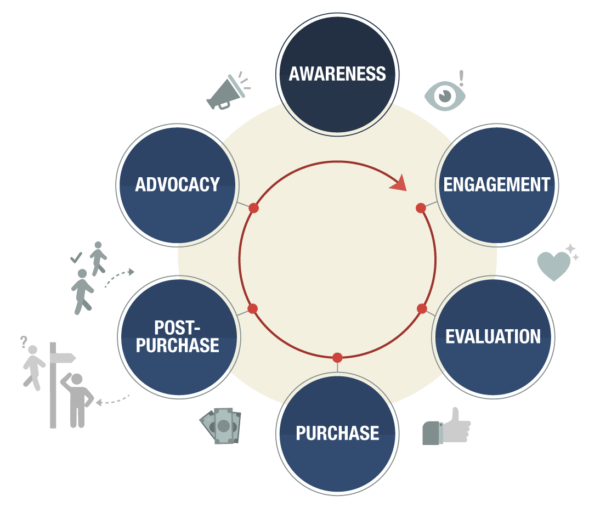
The six main stages of the customer lifecycle are:
- Awareness: It is the first stage when customers become aware of the existence of your brand, product, or service.
- Engagement: Customers consider what others are saying about your business and how you respond to service requests or complaints.
- Evaluation: Before making a decision, they compare and research. Offering digital self-service options can help customers evaluate products.
- Purchase: It is when customers have made their decision. Providing help to customers at this point is critical.
- Product experience: Delivering a good quality product ensures success at this stage by providing exceptional support.
- Advocacy: It is the final stage in the customer life cycle. You can continue to provide consistent support and to convert them into your brand advocates.
When talking about the customer lifecycle, we need to consider the main stages that take a buyer from the first acquaintance with your product or service through purchase, loyalty, and retention.
The key benefits of engaging customers across their journey are:
- You can increase the lifetime value by improving customer experience across all the stages of their journey.
- The marketing efforts achieve a higher return on investment (ROI) and maximum value for your brand.
- Improve your conversion rates by focusing on customer retention and increasing overall sales for your business.
12. Make Customers Part of Your Company’s Success
As we all know successful businesses are the ones with satisfied customers. One of the most important parts of building strong customer relationships is to make them part of your community or social events.
Customers feel valued and honored when you include them as your team and give them credit for your success. It is a big thing for them. Not always monetary favors are appreciated. There are other key aspects to SaaS customer success that you need to consider for long-term relationships with clients.
You can acknowledge their positive contribution to the company’s growth in the following ways.
- Reward your loyal customers – Give customers a reason to recommend you to friends by offering them discounts or free gifts in return for every new customer they introduce to your business.
- Giving them early access – You can provide early access to the newly launched product to make them feel special.
- Offer discounts for high-spending customers – Offer price reductions to customers when they reach a particular spending target.
13. Empower Your team to Go an Extra Mile
Outstanding customer experience is one that keeps customers coming back while spreading the word about their experience. One way to ensure your customers are completely satisfied is to provide your employees with comprehensive customer service training and grant them the resources and authority to deliver on the promise of excellent service.
When customers have problems, it becomes even more important. Empowering your employees to do what is best for the customer will avoid negative experiences.
How to increase customer experience by employee empowerment?
- Organizations must listen to their employees and address their problems and needs.
- Implanting a shared purpose in frontline workers, rather than implementing behavioral rules, will boost employee motivation.
- Responsibility should be assigned to frontline workers, in order to support creativity and innovative thinking.
14. Implement Customer Loyalty Programs
As simple as it is – offer great customer service, and you are guaranteed customers for life. Lifetime customers also mean an increase in referrals; hence customer loyalty is very important.
A good customer loyalty program can generate significant benefits in recurring revenue for your business by improving customer experience.
For crafting customer loyalty programs, the most important step is to identify your regular customers by analyzing their annual purchase, what, and how frequently they buy. Then prepare the loyalty programs by assessing your customers’ level of satisfaction via surveys, interviews, and monitoring customer comments.
In order to increase customer experience and RoI, businesses have taken to expanding their loyalty rewards to incorporate social and behavioral actions, like referral rewards and points for user-generated content, also providing customers a more personalized experience.
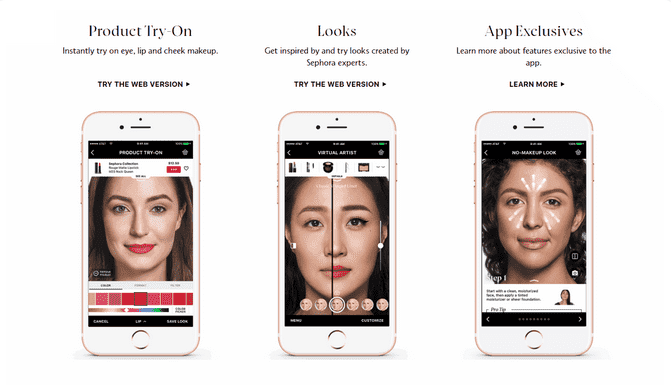
Let’s take the example of Sephora, the leading beauty brand globally.
They launched a tri-tiered “Beauty Insider” program to offer customers more lavish rewards and gifts. They give customers a product try-on with a virtual assistant, to help them find the perfect product for their skin type. Personalizing customer experience makes customers feel like they are part of your brand or community.
15. Optimize your Customer Journey
Considering the entire customer journey is very important for enhancing customer experiences. McKinsey’s research suggests that customer journeys are significantly more strongly correlated with business outcomes than are touchpoints.
It means once defining the customer journey, you have to map the whole journey to clearly understand the end-to-end experiences with consumers. This will help how were the interactions at each touchpoint, identify the gaps or improvement areas
How focusing on customer journey improves customer experience?
- Identifying the problems within them, focusing on the customer journey offers new opportunities to create a great customer experience.
- It enables customer support teams to plan strategies to reduce friction, enhance business relationships, and increase growth.
- You should understand how customer journey stages are “30% to 40% more strongly correlated with customer satisfaction and business outcomes.
16. Build a Customer-Centric Culture
Being customer-centric means developing a focal point towards delivering a positive experience throughout the customer journey. When you focus on increasing customer experience, it drives repeat customers and increases loyalty.
Research by Deloitte and Touche found that customer-centric companies were 60% more profitable compared to companies that were not focused on the customer.
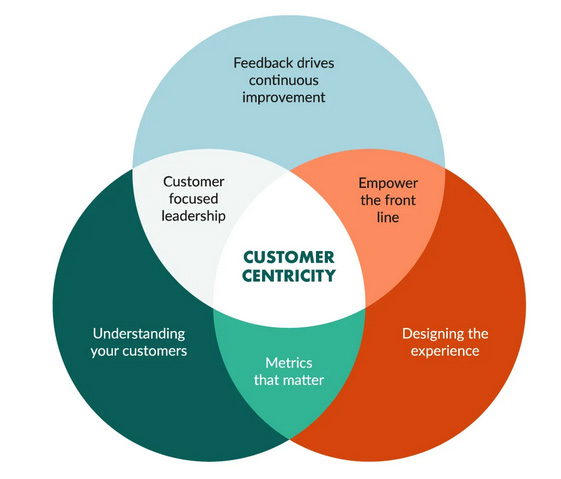
How can you improve customer experience by being customer-focused?
When you put your customers at the core of your business, you can collect a lot of useful data that can give a 360-degree view of the customers.
- You can use the data to understand customer behavior and interests.
- Then identify the best opportunities to offer products or services to the right customers. This can help to enhance the customer experience.
17. Make Use of Customer Analytics
Research shows that “90% of business managers believe analytics has the ability to improve sales.
Providing a great customer experience is hard and tying it to tangible business outcomes is even more difficult. In order to quantify customer experience, you first need to create a single view of the customers as they interact with your brand across channels and over time.
To achieve this unified view and deliver personalized customer experiences, making use of customer analytics is a must for a behavioral-driven engagement. With the emergence of artificial intelligence (AI) and big data, businesses can easily collect customer analytics. By using the power of analytics, you can measure detailed behavioral, demographic, and other customer experience metrics in real-time.
18. Better CX with Improved UX/UI Design
88% of online shoppers will avoid revisiting a website after having a negative digital experience. So, User Experience (UX) design plays an important role in shaping the first impression customers get when they visit your site. A well-crafted, intuitive, and visually engaging design not only enhances the overall customer experience but also increases the likelihood of them choosing to do business with you.
Here’s how refining your UX design can improve the overall customer experience:
- Use clear, descriptive texts for menus and buttons.
- Implement a search bar with proactive suggestions to help users find products or information quickly.
- Ensure pages load quickly, as slow speeds can frustrate users.
- Add alt text to images for screen readers.
- Use high-contrast color patterns for better visibility.
- Use one-click surveys for quick feedback.
- Add feedback buttons on key pages like the checkout or support sections.
Final thoughts on improving customer experience
It is clear by now that improved customer experience provides great opportunities that directly impact your topline performance. With the right CX strategy in place, it not only helps to improve customer experience but also makes your organization customer-centric with long-term benefits.
Hence, whether you are a small business or large enterprise focusing on improving customer experience this blog will be useful for you. Signing up with REVE Chat a great cx management software will help not only boost your business ROI but also improve your overall CX.
Frequently Asked Questions
A positive CX helps brands to earn customer loyalty, increase customer satisfaction, and get word-of-mouth referrals. By implementing an improved customer experience strategy businesses can stand out in competitive markets, retain existing customers, attract new ones, and ultimately increase sales conversions.
The 5 Cs of customer experience are a framework to help businesses create exceptional customer interactions and build lasting relationships. Those include customer centricity, consistency, communication, customization, and culture.
You can measure customer experience by monitoring several KPIs, such as Customer Satisfaction (CSAT) surveys, Net Promoter Score (NPS), Customer Effort Score (CES), customer feedback on social media and online reviews, analytics that you can get from customer interactions on your website, app, or other support channels.
Customers nowadays expect not only a good product but also a great experience. So, companies also need to take a different life-centric approach where brands will focus on how their product offerings can solve customers’ pain points and fulfill their ever-changing requirements at the same time offering an excellent experience.
Some of the common mistakes are- ignoring customer feedback, not improving customer service, providing inconsistent experiences across multiple communication channels and focusing solely to grab new customers, neglecting loyal ones.




